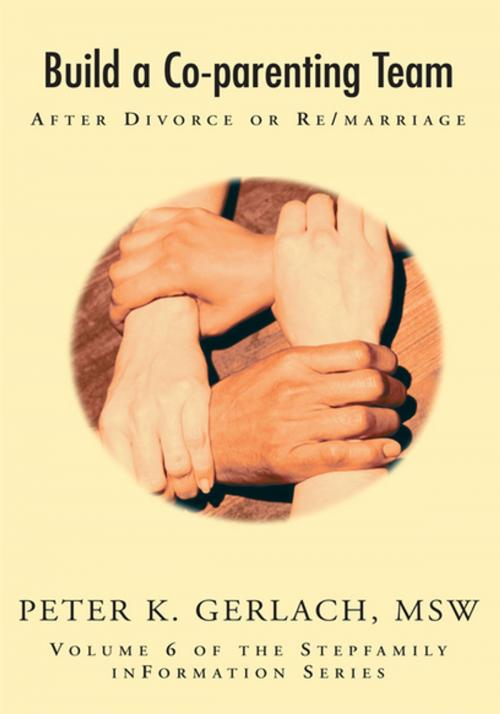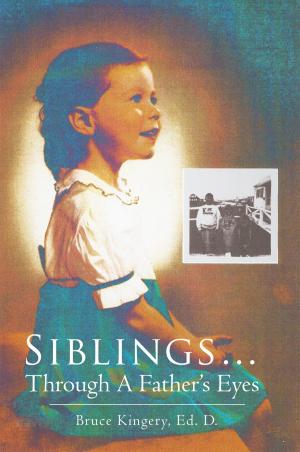| Author: | Peter K. Gerlach | ISBN: | 9781469103327 |
| Publisher: | Xlibris US | Publication: | March 23, 2003 |
| Imprint: | Xlibris US | Language: | English |
| Author: | Peter K. Gerlach |
| ISBN: | 9781469103327 |
| Publisher: | Xlibris US |
| Publication: | March 23, 2003 |
| Imprint: | Xlibris US |
| Language: | English |
Note: links below connect to the non-profit educational Break the Cycle! Web site (Formerly "Stepfamily inFormation"). Close the pages or use your browsers "back" button to return here.
Typical multi-home stepfamilies are riddled with conflicts between three or more co-parents and their relatives over child discipline, nutrition, visitations, custody, hygiene, religion, schooling, hoidays, loyalties, expenses, names, responsibilities, and other topics. The scope, complexity, and persistence of these disputes among ex mates, stepparents, and relatives can significantly contribute to eventual re/divorce. (The "/" notes it may be a stepparents first union).
Thisguidebook is part of a series intended to help co-parents and supporters overcome five common hazards that combine to (1) promote epidemic U.S. re/divorce, and (2) pass on significant psychological wounds to vulnerable children. The hazards are:
co-parents shared unawarenesses and ignorance of key information; plus...
unseen psychological wounds from low-nurturance childhoods; plus...
incomplete or blocked grief in kids and/or adults, which inhibits new bonds and adult intimacy; plus...
courtship neediness and romantic illusions; plus...
little informed stepfamily help in the media and local community.
Typical nuclear stepfamilies include three or more co-parents (bioparents and stepparents) and several minor kids shuttling between two or more homes:
Parenting effectively in this environment is far more complex than in "traditional" intact biological families - which catches typical co-parents and relatives by surprise.
**Why this book (and series)?**Families exist to nurture - i.e. to fill key needs of their kids and adults. Most U.S. stepfamilies follow the divorce of one or both new mates, most of whom are parents. Divorce suggests that their kids werent well nurtured in their first family, and have many concurrent developmental + special needs to fill in their complex stepfamily.
Note: links below connect to the non-profit educational Break the Cycle! Web site (Formerly "Stepfamily inFormation"). Close the pages or use your browsers "back" button to return here.
Typical multi-home stepfamilies are riddled with conflicts between three or more co-parents and their relatives over child discipline, nutrition, visitations, custody, hygiene, religion, schooling, hoidays, loyalties, expenses, names, responsibilities, and other topics. The scope, complexity, and persistence of these disputes among ex mates, stepparents, and relatives can significantly contribute to eventual re/divorce. (The "/" notes it may be a stepparents first union).
Thisguidebook is part of a series intended to help co-parents and supporters overcome five common hazards that combine to (1) promote epidemic U.S. re/divorce, and (2) pass on significant psychological wounds to vulnerable children. The hazards are:
co-parents shared unawarenesses and ignorance of key information; plus...
unseen psychological wounds from low-nurturance childhoods; plus...
incomplete or blocked grief in kids and/or adults, which inhibits new bonds and adult intimacy; plus...
courtship neediness and romantic illusions; plus...
little informed stepfamily help in the media and local community.
Typical nuclear stepfamilies include three or more co-parents (bioparents and stepparents) and several minor kids shuttling between two or more homes:
Parenting effectively in this environment is far more complex than in "traditional" intact biological families - which catches typical co-parents and relatives by surprise.
**Why this book (and series)?**Families exist to nurture - i.e. to fill key needs of their kids and adults. Most U.S. stepfamilies follow the divorce of one or both new mates, most of whom are parents. Divorce suggests that their kids werent well nurtured in their first family, and have many concurrent developmental + special needs to fill in their complex stepfamily.
















